Wheeled excavators are highly versatile and multifunctional machinery that can be employed for various excavation tasks. They are particularly well-suited for constructing roads and bridges and general excavating operations. The primary advantage of using a wheeled excavator is its ability to easily navigate urban environments, including paved roadways and parking lots.
Furthermore, the mobility and maneuverability of wheeled excavators make them highly transportable and enable them to be easily relocated to different job sites, maximizing their efficiency and effectiveness. Maintaining a wheeled excavator is important for its longevity and reliable performance. Here is a quick guide to maintaining a wheeled excavator:
Table des matières
BasculerTip for Maintaining wheeled excavator
1. Check fluids
Checking and maintaining fluids is an essential part of maintaining a wheeled excavator. Here are some details about what to check when it comes to fluids:
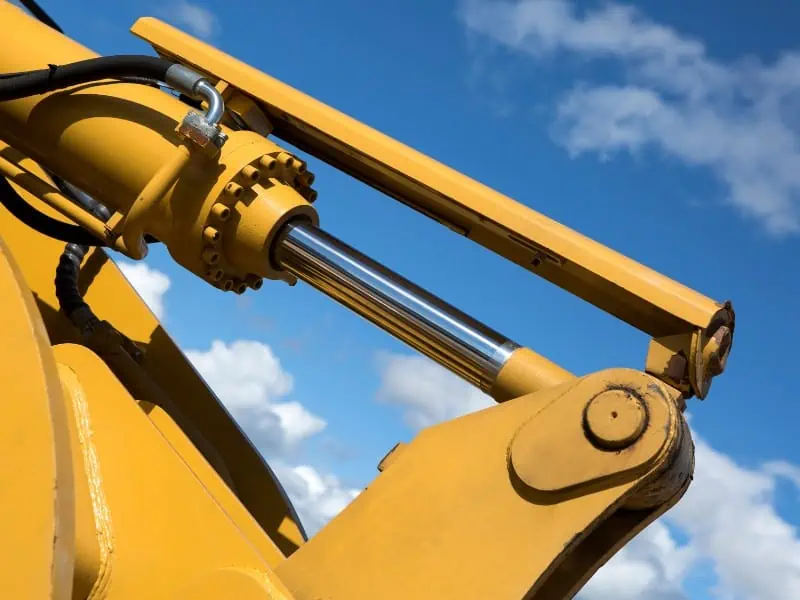
Hydraulic Fluid:The hydraulic fluid is responsible for powering the machine’s movement and operating the hydraulic components such as the boom, bucket, and arm. Check the fluid level regularly and top it off as needed. You should also check the condition of the hydraulic fluid and replace it if it appears dirty, contaminated, or has lost its properties. Use the manufacturer’s recommended hydraulic fluid and replace it according to the recommended schedule.
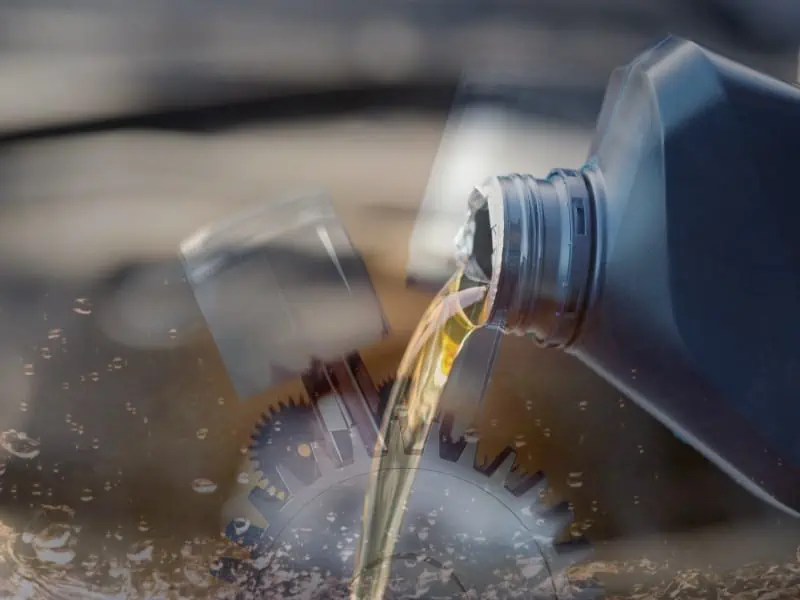
Engine Oil:The engine oil lubricates the engine and reduces friction, keeping the engine running smoothly. Check the oil level regularly and top it off as needed. You should also change the oil according to the manufacturer’s recommendations. Make sure to use the manufacturer’s recommended oil type and viscosity.
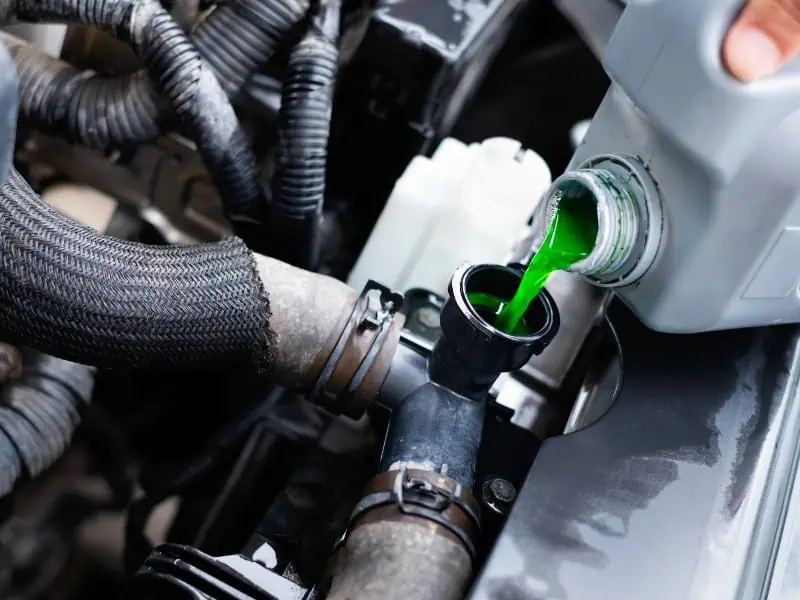
Coolant:The coolant regulates the engine’s temperature and prevents it from overheating. Check the coolant level and make sure that the ratio of water to the coolant is correct. Also, check the condition of the coolant and flush and replace it if it appears dirty or contaminated.
Transmission Fluid:If your excavator is equipped with an automatic transmission, check the transmission fluid level regularly and top it off as needed. Make sure to use the manufacturer’s recommended transmission fluid and replace it according to the recommended schedule.
Fuel:Keep an eye on the fuel level and refill before it gets too low. You should also inspect the fuel filter for signs of contamination and replace it according to the manufacturer’s recommendations.
Regularly checking and maintaining the fluids in your wheeled excavators can help ensure that it operates smoothly and efficiently, reducing the risk of costly repairs down the road. Follow the manufacturer’s recommended maintenance schedule for your machine’s fluids.
2. Inspect tires
Regularly inspecting the tires on your Maintaining wheeled excavator is important for safe and efficient operation. Here are some details about what to check when it comes to tire inspections:
Tire Pressure:Check the tire pressure regularly to ensure it’s within the manufacturer’s recommended range. Low tire pressure can lead to uneven wear, reduced stability, and increased fuel consumption. On the other hand, overinflated tires can result in a rougher ride, reduced traction, and increased risk of blowouts.
Tread Wear:Inspect the tire tread for signs of wear, such as uneven wear, flat spots, or cracking. Uneven wear could indicate that the excavator is out of alignment, and flat spots or cracking may be signs of overloading or improper inflation. Replace the tires if the tread depth falls below the manufacturer’s recommended depth or if there is significant damage to the tire.
Tire Damage:Check for any punctures, cuts, or other damage to the tires. If the tires are damaged, they should be repaired or replaced immediately, as operating with damaged tires can increase the risk of a blowout.
Wheel Alignment:Check the wheel alignment periodically to ensure that the tires are tracking properly. Misaligned wheels can result in uneven wear, poor handling, and decreased fuel efficiency.
Cleaning:Keep the tires clean to prevent debris from getting lodged in the treads or causing damage. Clean tires also make it easier to spot any damage or wear.
Properly maintaining the tires on your wheeled excavators can help extend their lifespan and ensure safe and efficient operation. Follow the manufacturer’s recommended maintenance schedule for tire inspections and take any necessary steps to repair or replace tires that show damage or wear.
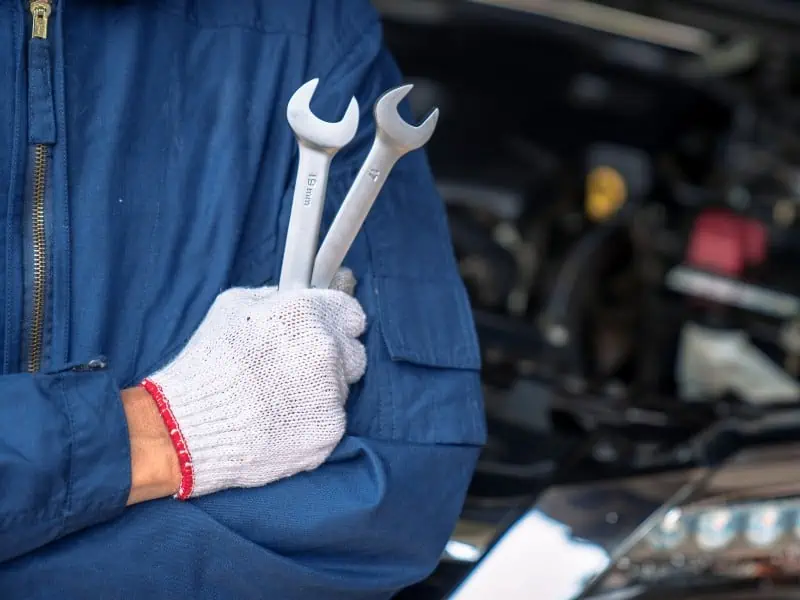
3. Lubrication
Lubrication is essential in Maintaining a wheeled excavator and operating smoothly and efficiently. Proper lubrication helps reduce friction and wear on the machine’s moving parts, which can help extend its lifespan. Here are some details about what to check when it comes to lubrication:
Grease:Apply grease to the machine’s moving parts according to the manufacturer’s recommended schedule. Common lubrication points include the boom and bucket pins and the arm and swing mechanism. Make sure to use the manufacturer’s recommended grease type and amount to avoid over-greasing or under-greasing.
Oil:Many wheeled excavators have oil lubrication systems for their engines and transmissions. Follow the manufacturer’s recommended oil change schedule to ensure the machine’s lubrication system is operating efficiently.
Chains and Tracks:Chains and tracks also require lubrication. Grease or oil them according to the manufacturer’s recommendations. Excessive grease or oil on the tracks can attract dirt and debris, which may accelerate wear and tear.
Joints and Bearings: Lubricate joints and bearings regularly to ensure smooth operation. Over-greasing may lead to excessive buildup and a reduction in efficiency.
Seals:Lubricate any seals with oil to ensure they remain effective and prevent them from drying out and cracking.
Cleanliness:Keep all lubrication points clean and free from debris. Dirt or debris on lubrication points may result in premature wear and tear and reduce efficiency.
By following the manufacturer’s recommended lubrication schedule, using the right lubrication type and amount, and keeping all lubrication points clean, you can help extend the lifespan of wheeled excavators and ensure it operates smoothly and efficiently.
4. Check filters
Checking and replacing filters is an important part of maintaining a wheeled excavator. Filters help to prevent dirt, debris, and other contaminants from entering the machine’s engine and other components. Over time, filters can become clogged, reducing the machine’s efficiency and potentially causing damage. Here are some details about what to check when it comes to filters:
Air Filter:The air filter prevents dirt and debris from entering the engine’s air intake system. Check the air filter regularly and replace it when it’s dirty or clogged. A dirty air filter can reduce the engine’s efficiency and increase fuel consumption. Follow the manufacturer’s recommended schedule for air filter replacement.
Fuel Filter:The filter prevents dirt and debris from entering the engine’s fuel system. Check the fuel filter regularly and replace it when it’s dirty or clogged. A dirty fuel filter can lead to engine damage or reduce efficiency. Follow the manufacturer’s recommended schedule for fuel filter replacement.
Hydraulic Filter:The hydraulic filter helps to prevent dirt and debris from entering the hydraulic system. Check the hydraulic filter regularly and replace it when it’s dirty or clogged. A dirty hydraulic filter can reduce the efficiency of the hydraulic system and cause damage to components. Follow the manufacturer’s recommended schedule for hydraulic filter replacement.
Cabin Air Filter:The cabin air filter helps to keep the operator’s cabin clean and free from dust and other contaminants. Check the cabin air filter regularly and replace it when it’s dirty or clogged. A dirty cabin air filter can reduce the efficiency of the HVAC system and make the operator’s environment less comfortable. Follow the manufacturer’s recommended schedule for cabin air filter replacement.
Transmission Filter: If your wheeled excavators are equipped with an automatic transmission, they may have a transmission filter. Check the transmission filter regularly and replace it when it’s dirty or clogged. A dirty transmission filter can reduce the efficiency of the transmission and cause damage to components. Follow the manufacturer’s recommended schedule for transmission filter replacement.
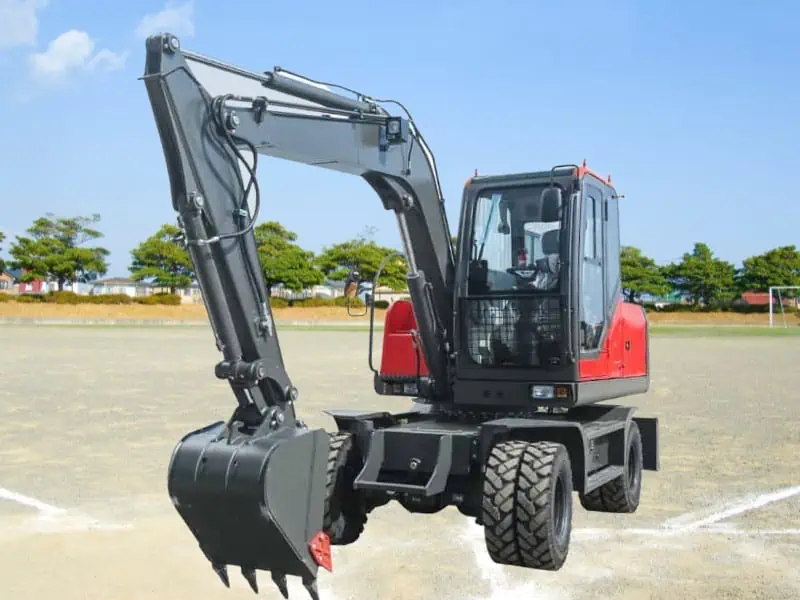
5. Inspect brakes
Inspecting the brakes of a wheeled excavator is a crucial part of Maintaining a wheeled excavator. It is essential to ensure that the brakes are in good condition and functioning correctly, as they play a vital role in the excavator’s safe operation. Here are some key things to check when inspecting the brakes of wheeled excavators:
Brake Pads:Inspect the brake pads for signs of wear. Worn brake pads can cause the excavator to stop less effectively, and they should be replaced when the brake pads reach their minimum thickness.
Brake Rotors:Inspect the brake rotors for signs of scoring, wear, or cracking. These issues can cause the excavator to stop less effectively, and the rotors may need to be replaced or resurfaced.
Calipers:Inspect the brake calipers for signs of damage, such as cracks or leaks. Damaged calipers can cause the excavator to stop less effectively and may need to be replaced.
Brake Lines:Inspect the brake lines for signs of wear or damage, such as cracks or leaks. Damaged brake lines can cause the brakes to fail and require replacement.
Brake Fluid:Check the brake fluid level and condition. If the brake fluid is low or contaminated, it can cause the brakes to fail and require a brake fluid flush.
Handbrake:Test the handbrake to ensure that it is functioning correctly. The handbrake should hold the excavator in place when engaged.
Brake Pedal:Test the brake pedal to ensure it is functioning correctly. The brake pedal should feel firm and responsive.
Test the Brakes:Finally, test the brakes by operating the excavator in a safe area. Test the brakes at different speeds and ensure they stop the excavator effectively.
Inspecting the brakes of wheeled excavators is an essential part of maintenance. Check the brake pads, rotors, calipers, lines, fluid, handbrake, and brake pedal, and test the brakes to ensure they are functioning correctly. Any issues with the brakes should be addressed promptly to ensure the safe operation of the excavator.
6. Check tire pressure
Checking the tire pressure of a wheeled excavator is an essential part of Maintaining a wheeled excavator. Properly inflated tires can improve the excavator’s performance and extend the life of the tires. Here are some key things to check when inspecting the tire pressure of a wheeled excavator:
Manufacturer’s recommendation:Check the manufacturer’s manual for the recommended tire pressure for the excavator. The recommended tire pressure may vary depending on the tire type and the excavator’s weight.
Check the pressure when cold:Check the tire pressure when the tires are cold. Tires that have been in use may heat up, which can cause the pressure to increase, resulting in an inaccurate reading.
Use a tire pressure gauge:Use a tire pressure gauge to measure the pressure in each tire. Place the gauge on the valve stem and press down until you get a reading.
Check for leaks:Check for leaks around the valve stem or any visible damage on the tire surface. A damaged tire can cause pressure loss and needs to be repaired or replaced.
Inflate/deflate as needed:
- Inflate or deflate the tires to reach the recommended pressure.
- Use a compressor to inflate the tires and a tire pressure gauge to monitor the pressure.
- Deflate the tires by removing the valve core or using a valve tool to release air.
Check spare tire:Remember to check the pressure in the spare tire if the excavator has one.
Checking the tire pressure of a wheeled excavator is an essential part of maintenance. Check the manufacturer’s recommendation, use a tire pressure gauge, check for leaks, and inflate or deflate the tires as needed to reach the recommended pressure.

7. Check the battery
Checking the battery of a wheeled excavator is an important part of Maintaining a wheeled excavator. The battery provides power to the excavator’s electrical system, and a dead or weak battery can prevent the excavator from starting or operating properly. Here are some key things to check when inspecting the battery of a wheeled excavator:
Visual inspection:Inspect the battery for any visible signs of damage, such as cracks, corrosion, or leaks. Damaged batteries should be replaced immediately.
Check battery terminals: Check the battery terminals for corrosion or loose connections. Corrosion can be cleaned using a wire brush and a solution of baking soda and water. Loose connections can be tightened using a wrench.
Test the battery voltage:Test the battery voltage using a digital multimeter or voltmeter. When the engine is off, the voltage should be between 12.4 and 12.7 volts. If the voltage is lower, it may indicate a weak or dead battery that needs to be charged or replaced.
Load test:Perform a load test on the battery using a battery load tester. A load test can determine if the battery can hold a charge under a load. If the battery fails the load test, it needs to be replaced.
Check charging system:Check the charging system, including the alternator and voltage regulator, to ensure that it is charging the battery properly. A malfunctioning charging system can cause the battery to drain and prevent the excavator from starting.
Replace as necessary:If the battery fails any tests or is over three years old, it should be replaced.
Maintenance:Regular battery maintenance includes keeping the terminals clean and tight, using a battery tender or trickle charger to maintain the battery charge during storage periods, and not allowing the battery to discharge completely.
Checking the battery of wheeled excavators is an important part of maintenance. Visually inspect the battery, check the terminals, test the battery voltage, perform a load test, check the charging system, and replace the battery as necessary. Regular battery maintenance can prevent battery problems and extend the battery’s life.
8. Regular Wheeled Excavator Maintaining
Regular maintenance is essential for ensuring a wheeled excavator’s optimal performance, safety, and longevity. Regular maintenance involves a series of scheduled inspections, repairs, and replacements to keep the excavator in top condition.
Conclusion
In conclusion, maintaining a wheeled excavator involves various tasks, including inspecting the brakes, checking tire pressure, and checking the battery. Regular Maintaining a wheeled excavator is also essential. Following the manufacturer’s recommended maintenance schedule and using genuine replacement parts is important to ensure the excavator’s optimal performance, safety, and longevity. Hixen is always helpful in the Maintaining wheeled excavator you can contact us.
